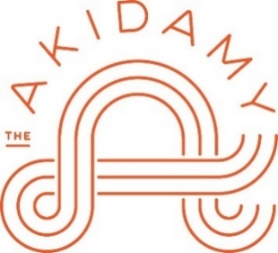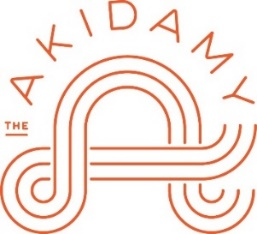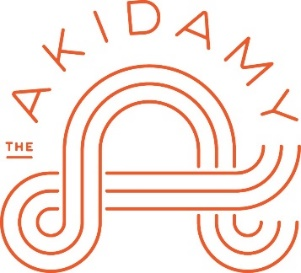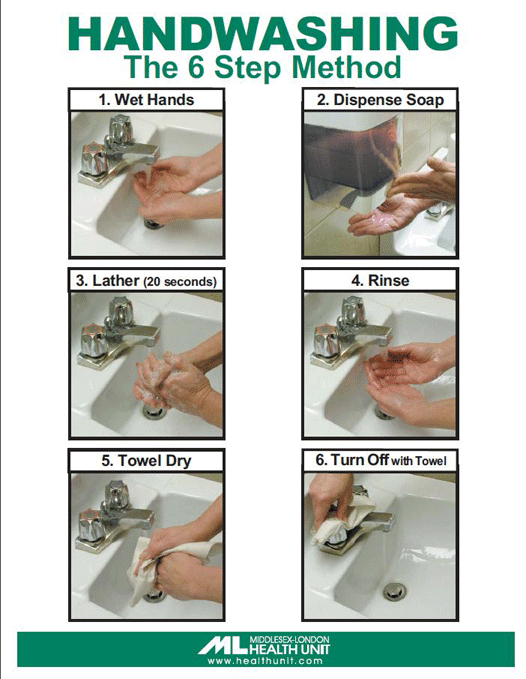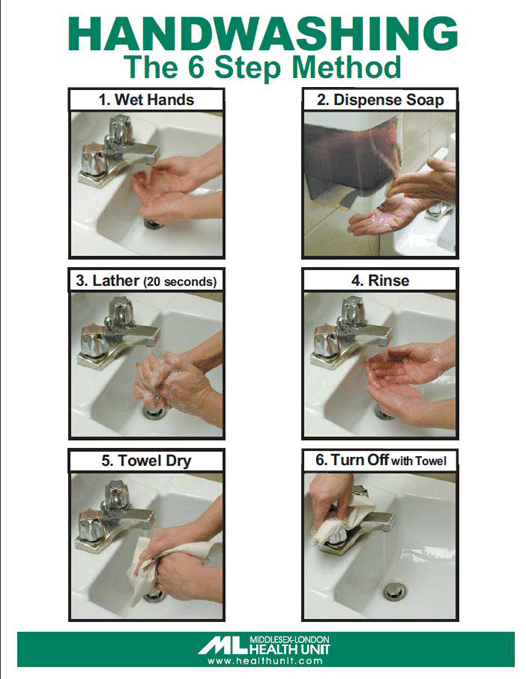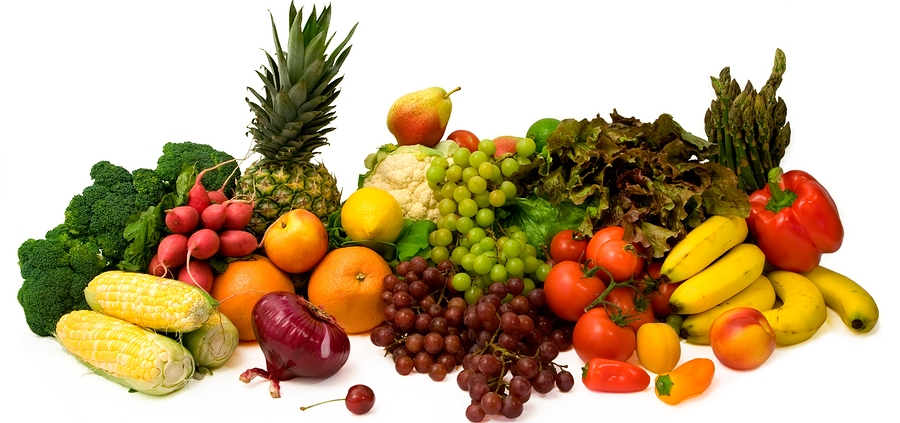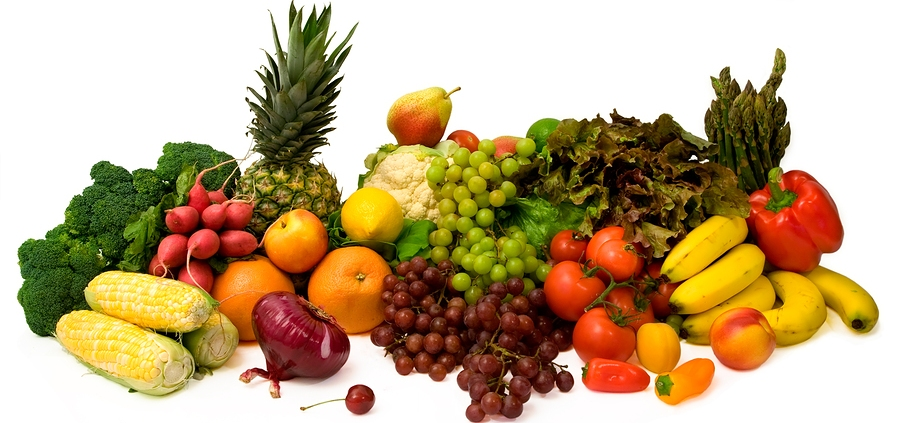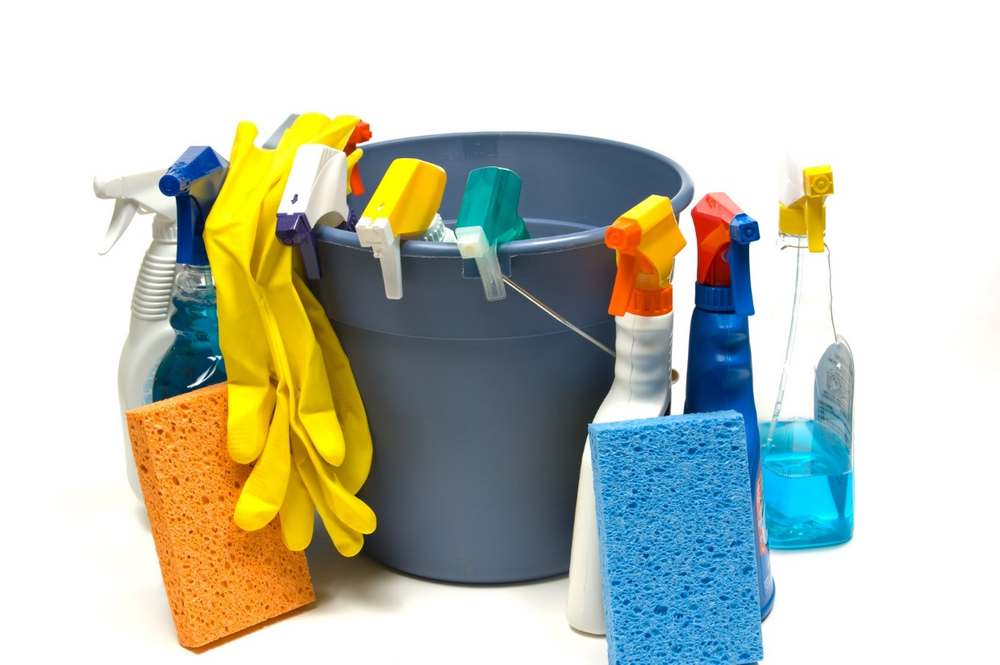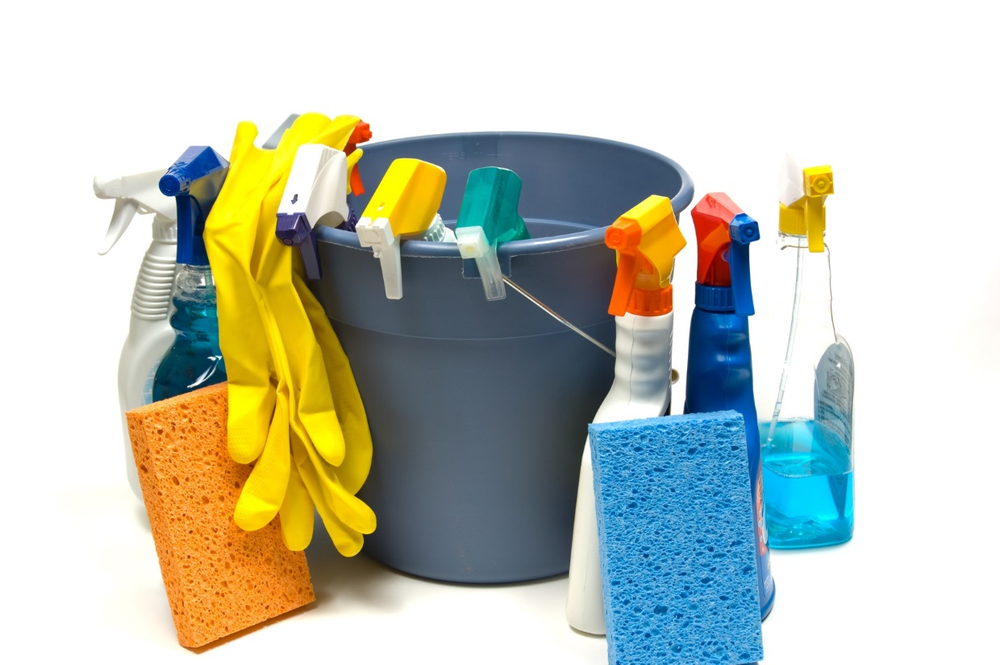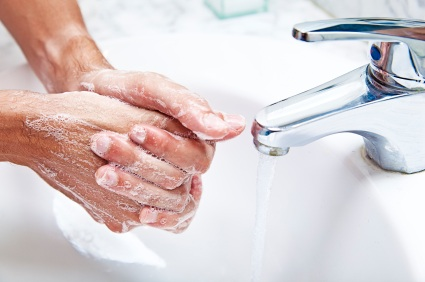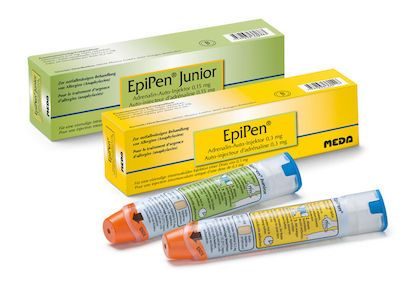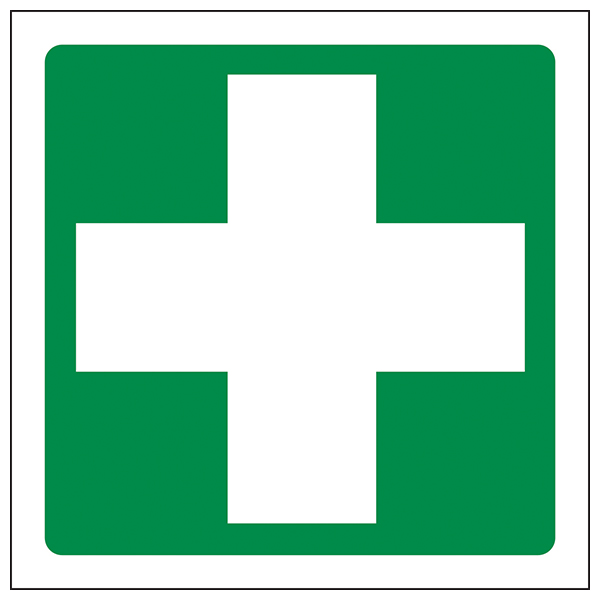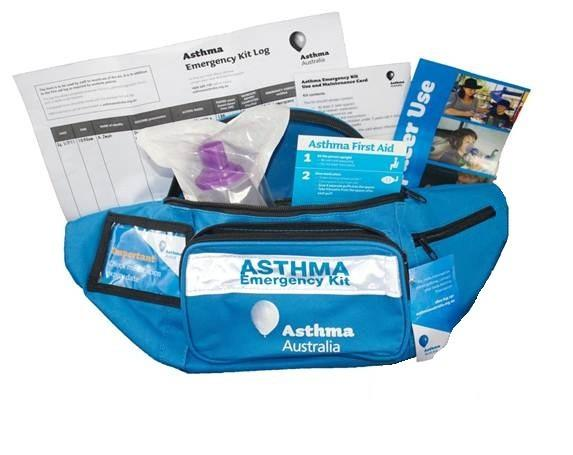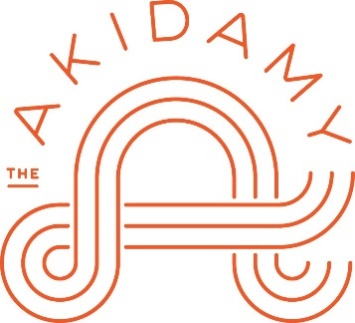Food Safety Program
Index
| Documents | Document Number | Version Date | Version Date | Version Date | Version Date |
| Administration | |||||
| Index | Index | March 2025 | |||
| Food Safety Introduction | Introduction | March 2025 | |||
| Organisational Chart | Organisational Chart | March 2025 | |||
| Quality Policy Statement | Quality Pol Statement | March 2025 | |||
| Document & Record Control | Doc & Record Control | March 2025 | |||
| Supplier Approval | Supplier Approval | March 2025 | |||
| Approved Suppliers | Approved Suppliers | March 2025 | |||
| Supplier Agreement Form | Supplier Agree Form | March 2025 | |||
| Glossary of Terms | Glossary | March 2025 | |||
| Procedures & Worksheets | |||||
| Staff Training | SOP1 | March 2025 | |||
| Staff Training Record | SOP1WS1 | March 2025 | |||
| Employee Declaration | SOP1WS2 | March 2025 | |||
| Personal Hygiene Procedure | SOP2 | March 2025 | |||
| Staff Illness (Transmissible Diseases) Register | SOP2WS1 | March 2025 | |||
| Cleaning & Sanitation Procedure | SOP3 | March 2025 | |||
| Kitchen Cleaning/ Maintenance Schedule | SOP3WS1 | March 2025 | |||
| Kitchen Fridge/ Freezer Temperature Record | SOP3WS2 | March 2025 | |||
| Nursery Room Cleaning/ Maintenance Schedule Nursery Room Fridge/ Freezer Temperature Record | SOP3WS1A SOP3WS2A | March 2025 | |||
| Pest & Vermin Control Procedure | SOP4 | March 2025 | |||
| Rodent/ Cockroach Bait Activity Record | SOP4WS1 | March 2025 | |||
| Kitchen Pest Control Log | SOP4WS2 | March 2025 | |||
| Allergen Control Procedure | SOP5 | March 2025 | |||
| Facility Maintenance Procedure | SOP6 | March 2025 | |||
| Maintenance Program | SOP6WS1 | March 2025 | |||
| Thermometer Calibration Procedure | SOP7 | March 2025 | |||
| Thermometer Calibration Record | SOP7WS1 | March 2025 |
| Documents | Document Number | Version Date | Version Date | Version Date | Version Date |
| Program Review Procedure | SOP8 | March 2025 | |||
| Program Review Meeting | SOP8WS1 | March 2025 | |||
| Program Review Agenda | SOP8WS2 | March 2025 | |||
| Kitchen Internal Review Checklist | SOP8WS3 | March 2025 | |||
| Hazard Assessment and Control | |||||
| Hazard Assessment & Control Introduction | HAC Intro | March 2025 | |||
| Good Manufacturing Procedures | GMP’s | March 2025 | |||
| Process Steps Flow Chart | FLOW1 | March 2025 | |||
| Hazard Assessment & Control Register | Register | March 2025 | |||
| Hazard Control Table 1 | HCT1 | March 2025 | |||
| Hazard Control Table 2 | HCT2 | March 2025 | |||
| Hazard Control Table 3 | HCT3 | March 2025 | |||
| Hazard Control Table 4 | HCT3 | March 2025 | |||
| Receival Record | HACWS1 | March 2025 | |||
| Cooking/ Reheating/ Cooling Record | HACWS2 | March 2025 | |||
| Validation and Verification | V&V | March 2025 | |||
| Verification Schedule | Veri | March 2025 | |||
| Document No: Introduction | Food Safety Program |
| Section: Administration | |
| Page: 1 of 1 | Version Date: March 2025 |
Business Details
| Trading Name of Business | The Akidamy School of Early Learning |
| Address of Business | 2/28 Cantonment Street Fremantle |
| Phone | (08) 9227 1409 |
| Fax | N/A |
| office.fremantle@theakidamy.wa.edu.au | |
| Name of person responsible for the food safety program | Lisa McLean - School Director/ Food Safety Supervisor Florent Pasnin - School Chef/ Food Safety Supervisor Lauren Cassidy-Thomas - Food Safety Supervisor |
| Name of local Government for the area in which the business is located | City of Fremantle |
Food Service Details
| Business and intended customers | A registered school of early learning that provides education, care and meals to children aged between 0 and 5 years of age. Licensed for 90 children. |
| Type of food served |
|
| Purpose of the Food Safety Program | The purpose of this food safety plan is to systematically examine all of food handling activities to identify any potential hazards. Any identified hazards are controlled, monitored, reviewed and if found not to be in control will have corrective action implemented. |
| Scope of the Food Safety Program | The scope of this food safety program covers the purchase of ingredients from a supermarket, transporting and/or delivery from an approved supplier, storage, preparation, cooking, cooling, plating and serving the food. |
| Scope of the Service | The school provides children with all meals including morning tea, lunch and afternoon tea daily. The school has developed a range of weekly menus to ensure that children are introduced to healthy vegetarian meals from around the world. The school aims to use as much local fresh produce as possible and continue to support our healthy eating philosophy. |
| Document No: Introduction | Food Safety Program |
| Section: Administration | |
| Page: 1 of 2 | Version Date: March 2025 |
The children’s services sector has been identified as a high priority group due to the susceptibility of children to food-borne illness. In addition to the potential for contamination from a food handling operation, food safety hazards arising from factors such as the personal hygiene of food handlers and the potential for cross contamination from activities such as nappy changing, highlight the need for children’s services operations to ensure the provision of safe food to children. Furthermore, this tool will aid children’s services operations to comply with the national food safety standards, which are mandatory for all food businesses.
All Educators who handle food need to know how to do this safely. Before any Educator starts work, they should have the right skills and knowledge in food safety and food hygiene. It is a legal requirement and part of the Food Safety Program for the business.
New Educators will NOT handle food prior to completing their I‘m Alert online training.
The Australasian Society of Clinical Immunology and Allergy (ASCIA) Anaphylaxis e-training courses have been developed to address the need for a national and standardised approach to training in the recognition and management of anaphylaxis (severe and potentially life-threatening allergic reactions). New Educators are required to complete the online training which was developed in conjunction with the Department of Health WA and can be found at the following link: allergy.org.au/content/view/366/325/
What is Food Safety?
Food safety is just common sense! It means keeping things clean and serving hot foods hot and cold foods cold. Food safety involves food storage, temperature control, cleaning and sanitising, personal hygiene, and pest control. If you work with food, YOU have an important responsibility to handle it safely.
Schools that provide potentially hazardous food are high food safety risk because children aged under five years are generally more susceptible to infection than the average healthy adult, and the symptoms and consequences of food-borne illness can be more severe for young children.
The Food Safety Team comprises of the following people:
- Chef
- Director
- Pedagogista
- Educational Leader
- Cook
- Qualified Educators
How was the program sourced?
This Food Safety Program was developed from a template provided by Food Technology Services Pty Ltd.
Our Food Safety Program
This School has implemented a documented Food Safety Program which incorporates:
- Procedures - A set of general documents that detail the purpose and scope of nominated support system elements. These procedures detail what, when, where, how and why of implementation.
- Hazard Assessment documents - An auditable record of the application based on HACCP principles in the development and implementation of planning and preventive measures documented in tables, SOPs and Good Manufacturing Practices.
- Records, forms, plans, specifications and other reference documents.
A review process is carried out to determine if control systems and procedures achieve their purpose, continue to be appropriate or are in need of improvement.
The review process includes but is not limited to:
- The organisational structure of the Food Safety Program.
- The implementation of the Food Safety Program.
- The achieved quality of product, process or service.
- Information based on customer feedback, internal feedback, process performance and product performance.
- Changes in technology or regulatory requirements.
A review meeting involving the management and food safety team is carried out at least every 12 months. Audit results and other records are evaluated on a systematic basis to detect chronic or systematic problems and trends. Action is taken to resolve problems permanently and follow-up checks are carried out to assess the effectiveness of action taken.
All food ingredients are purchased from “Approved Suppliers”, and any new suppliers are required to supply evidence that they can supply food ingredients that comply with the food safety requirements.
The Food Safety Program Manual contains an index which is the document register identifying all associated documents, procedures forms and monitoring records. All documents and monitoring records have a header which identifies the document number, page numbering, location in the manual and current version date.
A single copy of the Food Safety Program Manual is always maintained on the premises and is located in Management’s office. The manual and all associated records are retained on file for a minimum of two years and are made available for audits.
Further Information
Further information on food safety and food safety programs is available from:
• The Government of WA Department of Health health.wa.gov.au/home/
• Your local council Environmental Health Officer
• Food Standards Australia New Zealand foodstandards.gov.au/
| Document No: Quality Pol Statement | Food Safety Program |
| Section: Administration | |
| Page: 1 of 1 | Version Date: March 2025 |
Quality Policy Statement
The Akidamy School of Early Learning is supplying the community with a facility to care for children while also providing a safe supply of food while in our care
As part of the commitment to food safety, this school has implemented a Food Safety Program. To demonstrate our commitment in establishing and maintaining food safety, HACCP principles and the requirements of the Food Standards Code have been used to manage food safety risks at all stages of food processing and handling.
The Chef, Director and Educators are committed to the safe preparation and service of food to all children in their care.
This School is committed to meeting or exceeding the needs and expectations of its customers and ensuring that all requirements in the preparation and service of safe food are maintained at all times.
| Document No: Organisational Chart | Food Safety Program |
| Section: Administration | |
| Page: 1 of 1 | Version Date: March 2025 |
Organisational Chart
Management Team
School Director
Lisa McLean
Acting Pedagogista
Bianca Lawlor
School Chef
Florent Pasnin
Food Safety Supervisors as of 26 March 2025
Lisa McLean
Lauren Cassidy-Thomas
Florent Pasnin
Qualified Educators and Teachers
Charis Oakley
Bianca Estojero
Gemma Porter
Tarra Bathgate
| Document No: Doc & Record Control | Food Safety Program |
| Section: Administration | |
| Page: 1 of 2 | Version Date: March 2025 |
Document & Record Control
Format and identification of documents
All documents and monitoring records have a header which
- Identifies the document number.
- The business name.
- The section identifies the location in the manual.
- A page numbering system identifies the number of pages in the document.
- The version date identifies the current status of the document.
- For Example:
| Document No: | Food Safety Program |
| Section: | |
| Page: 1 of 6 | Version Date: March 2025 |
Document and Amendment Register
The Food Safety Program contains an index which is the document and amendment register identifying all associated documents, procedures forms, monitoring records and current version date.
External Documents
These include but are not limited to the following documents:
- Food Safety Standards
- MSDS for pest control chemicals
- MSDS for cleaning chemicals
- Audit reports
Internal Documents
All internal documents and worksheets are recorded in the index at the front of the manual. The current version date of each document is recorded in the index. Each of the procedures has a section that refers to the worksheets that are used to record any information relating to that procedure. The Hazard Control Table refers to the relevant worksheets for recording and monitoring critical control points within the food safety program.
Obsolete Documents and Records
At least one copy of all obsolete documents or records are retained. The obsolete documents or records are to be physically identified in some manner to ensure that they are not used. The Management Team are responsible for the location and storage of all obsolete documents. Amendments to the Food Safety Program are recorded by placing the current date in the version date section in the index and in the header of the document.
| Document No: Doc & Record Control | Food Safety Program |
| Section: Administration | |
| Page: 2 of 2 | Version Date: March 2025 |
Control of Records
Records are to be stored by the Management Team in a manner as to maintain them legible, readily identifiable and retrievable. Completed records are stored in the office to prevent loss, damage or theft.
Records from any audit of the Food Safety Program will be maintained for a minimum of 4 years. All other records of the food safety plan are maintained and stored for 2 years.
Approval of New Documents or Amendments
The Management Team is to discuss and approve any changes with staff that are involved in the process that is affected before they are carried out or modified in the manual. The Management Team will update the index of each manual to identify which documents have been amended or added. The index has a section that identifies the current version date of the document in the manual
| Document No: Supplier Approval | Food Safety Program |
| Section: Administration | |
| Page: 1 of 2 | Version Date: March 2025 |
Supplier Approval
Method of Approval
The steps involved in developing an ‘Approved Supplier Program’ include;
- Determine and list what approval criteria will be used to assess each supplier,
- Identify a supplier,
- Contact the supplier, requesting the supplier to provide evidence of compliance with the approval criteria,
- Gather and file evidence of supplier approval.
Method of Removal
Suppliers may be removed from the Approved Supplier Program for failing to comply with specifications. Before a supplier is removed the supplier’s history is discussed with the Management Team.
List of Approved Suppliers
A list of suppliers is maintained in the Food Safety Manual. Once a supplier is approved or removed the list is updated and the date recorded.
Current Suppliers
Ingredients and food supplies are purchased from a local supermarket or direct from a supplier who delivers the food to our business.
The current approved suppliers are listed on the Approved Suppliers List, located in the administration section of the manual.
New Suppliers of Produce/ Products/ Services
New suppliers of produce are to comply with the following requirements.
All new suppliers are to be approved by the Management Team.
High Risk Food Suppliers
Provide a copy of the food registration of the business from the local Enforcement Agency or confirmation from the Local Enforcement Agency that the business is a registered food business or a completed and signed Supplier Agreement Form; or a HACCP Certificate if the food is delivered by the supplier or a completed Supplier Agreement Form.
Providing Cleaning Products
- Ensure product is suitable for food premises and food contact surfaces
- Supplier to provide MSDS on all products before delivery
Services
All suppliers of services are selected on past performance with a history of satisfactory compliance. The supplier may be selected on reference from another company due to their satisfactory performance, these suppliers will be closely monitored until they have established a history of satisfactory compliance.
Pest Control
The company is to supply a current copy of the following: - Department of Health registration for Company
- Department of Health License for the operators
| Document No: Supplier Approval | Food Safety Program |
| Section: Administration | |
| Page: 2 of 2 | Version Date: March 2025 |
Supplier Performance
Approved Suppliers are reviewed at least every 12 months. They are discussed as an agenda item regarding supplier performance during the program review meetings.
Removal of a supplier from the Approved Supplier List may occur as a result of the following:
- Recurring supply of non-conforming produce
- Inability to supply requested documentation
- Cannot provide the after-sales service support that may be needed
- Are unethical
| Document No: Approved Suppliers | Food Safety Program |
| Section: Administration | |
| Page: 1 of 1 | Version Date: March 2025 |
Approved Suppliers
| Product | Approved Supplier | Approval Criteria |
| Food Ingredients (Delivery by company) | Woolworths Coles |
|
| Fruit and Vegetables | Pezzano Enterprises PO Box 1717 Canning Vale WA 6155 Phone: 9456 3677 Email: orders@pezzano.com.au accounts@pezzano.com.au |
|
| Pest Control | Pesti Pest Control Office: 0412 485 957 Mobile: 0402 231 670 info@pestipestcontrolperth.com.au |
|
| Cleaning Chemicals | Saint Light |
|
| Document No: Supplier Agree Form | Food Safety Program |
| Section: Administration | |
| Page: 1 of 1 | Version Date: March 2025 |
Supplier Agreement Form
Supplier: ______________________________________________________________
Address:______________________________________________________________
Phone: _____________________ Email: __________________________________
Goods Supplied: ________________________________________________________
Frequency of delivery: daily / weekly / fortnightly / monthly / irregularly
General requirements for the products:
All food products are to be supplied in good, fresh condition, free from any odour, discolouration or signs of spoilage or contamination and under temperature control (ie below 5°C or above 60°C).
Package and labelling requirements:
All food products are to be delivered in food grade containers that are free from chemical or physical contaminants. Labelling shall comply with the requirements of the Food Standards Code. All products are to be within the specified Use-by and Best Before Dates.
Transport requirements:
All food products are to be transported in clean food transport vehicles. The foods are not to be transported in direct contact with meat, animals, plants, pests or chemicals or exposed to sunlight.
All potentially hazardous foods (dairy foods, meat, fish, & smallgoods) must be transported under refrigeration at or below 5°C. Frozen food is to be delivered frozen hard (not partially thawed). If food is transported between 5°C and 60°C, it must be demonstrated that the temperature of the food, having regard to the time taken to transport the food, will not adversely affect the microbiological safety of the food.
Conditions for supply:
It is required that all foods supplied comply with the Food Standards Code at all times. Failure to do so will result in refusal of the goods. By signing this agreement the supplier confirms that they are a registered food business under the Food Act 2008.
Supplier’s acceptance:
Name: _________________________________________
Date: ____ / ____ / ______
Signature: _____________________________________
| Document No: Glossary | Food Safety Program |
| Section: Administration | |
| Page: 1 of 2 | Version Date: March 2025 |
Glossary of Terms
Approved food safety auditor
An auditor approved by the Department of Health or equivalent interstate body to audit food safety programs.
Calibration
Calibration is the process of checking that measuring equipment is working effectively and correcting/adjusting the equipment if it is not doing so. For a thermometer, it is making sure that it is measuring temperatures accurately (within +/- 1 °C).
Clean
Means clean to touch, free from visible foreign matter, and free from objectionable odour.
Contamination
The introduction or occurrence of a biological or chemical agent, foreign matter or other substance that may compromise food safety or suitability. These agents are referred to as contaminants.
Control
Any method that prevents, eliminates or reduces a hazard to an acceptable level.
Corrective actions
The action to be taken when monitoring indicates that a control is not being met.
Food handler
A person who engages in the handling of food, or who handles surfaces likely to come into contact with food.
Food safety program
A written document that systematically identifies food safety hazards, controls, means of monitoring controls and corrective actions. Records demonstrate program compliance.
Handling of food
Receiving, storing, transporting, thawing, preparing, cooking, reheating, packing, cooling, and serving of food.
Hazard Analysis Critical Control Point (HACCP)
HACCP is system for managing hazards and is the basis for Standard 3.2.1 Food Safety Programs.
Hazards
A substance or foreign agent that has the potential to cause food to be unsafe, i.e., it can cause illness or injury. Hazards are classified as biological, chemical and physical.
Micro-organism
Organism not visible to the unaided eye, for example, bacteria, viruses and some fungi and parasites.
Monitoring
A planned series of observations and measurements of process controls implemented to ensure controls are effective.
| Document No: Glossary | Food Safety Program |
| Section: Administration | |
| Page: 2 of 2 | Version Date: March 2025 |
Pathogen
An agent that causes disease, especially a living micro-organism such as a bacterium or virus.
Potentially hazardous foods
Any food that must be temperature controlled (generally below 5oC or above 60oC) to prevent the growth of micro-organisms or the formation of toxins. Generally potentially hazardous foods include dairy products, ready-to-eat prepared fruit, vegetables, sprouts, cooked grain products, meats, poultry, fish and shellfish, and any food made up of these foods.
Process Validation
Obtaining documented evidence that demonstrates that a specific process will consistently provide safe food. (e.g. published scientific findings or in-house trials)
Ready-to-eat food
Food that is ready for consumption and will not undergo further processing.
Review
The process of examining the food safety program to ensure its adequacy. The review focuses on the ability of the program to control the child care schools food safety program, not food handler compliance with the program.
Sanitise
The process of destroying disease producing micro-organisms or reducing them to a safe level.
Toxins
Toxins are poisonous substances formed by some micro-organisms and may not be destroyed by cooking.
Verification
Gather evidence to prove that the requirements of the food safety program are being fulfilled.
e.g. reviewing of records or internal assessment
| FOOD SAFETY PROGRAM SECTION 2: PROCEDURES & WORKSHEETS |
| Document No: SOP1WS1 | Food Safety Program |
| Section: Procedures & Worksheets | |
| Page: 1 of 1 | Version Date: March 2025 |
Staff Training Record
Name: ____________________________ Position: ____________________________ Start Date: ____ /____ /______
| Date | Required | Training | Trainer Sign | Employee Sign | Review Date | Review Date |
| Employee Declaration (SOP1WS2) | ||||||
| I’m Alert Online Food Handler Training (Annually) | ||||||
| Personal Hygiene Procedure | ||||||
| Calibration of Thermometers (SOP7) | ||||||
| Cleaning equipment & completing records | ||||||
| Correct use of cleaning chemicals | ||||||
| Inspection and receival of goods on arrival (HACWS1) | ||||||
| Temperature recording of fridges & freezers | ||||||
| Temperature recording of Cooking, Cooling, Reheating (HACWS2) | ||||||
| Good Manufacturing Procedures (GMPs) | ||||||
| Updated on new legislation from the 3.2.2A changes | ||||||
| Is confident in knowing who the primary and secondary food safety officer is |
| Document No: SOP1WS2 | Food Safety Program |
| Section: Procedures & Worksheets | |
| Page: 1 of 2 | Version Date: March 2025 |
| Employee Declaration |
Food Safety Program
Child care schools have been identified as a high priority group due to the susceptibility of children to food-borne illness. In addition to the potential for contamination from a food handling operation, food safety hazards arising from factors such as the personal hygiene of food handlers and the potential for cross contamination from activities such as nappy changing, highlight the need for child care schools to ensure the provision of safe food to children. Furthermore, this tool will aid employees to comply with the national food safety standards, which are mandatory for all food businesses.
All employee’s who handle food need to know how to do this safely. Before any employee starts work, they should have the right skills and knowledge in food safety and food hygiene. It is a legal requirement and part of the Food Safety Program for the business.
New employees are required to complete the following BEFORE they are to handle food: (this qualifies as a level 1 training food safety).
- I‘m Alert online training: imalert.com.au/foodsafety/
- Australasian Society of Clinical Immunology and Allergy (ASCIA) Anaphylaxis online training: allergy.org.au/content/view/366/325/
| Obligations | Food Handler Signature |
| As a food handler, I must take all reasonable measures not to handle food or surfaces likely to come in contact with food in any way that is likely to compromise the safety and suitability of food. | |
As a food handler, if I have a condition or a symptom that indicates that I may be suffering from a food borne disease, or if I know I am suffering from a food borne disease, or that I am a carrier of a food borne disease, whilst at work, I must:
| |
| As a food handler, I must notify my supervisor if I know or suspect that I may have contaminated any food I have handled. | |
As a food handler, when engaging in any food handling operation, I must:
|
| Document No: SOP1WS2 | Food Safety Program |
| Section: Procedures & Worksheets | |
| Page: 2 of 2 | Version Date: March 2025 |
| Obligations | Food Handler Signature |
As a food handler, I must wash my hands:
| |
As a food handler, I must wash my hands in the manner described below, when engaging in a food handling operation that involves unprotected food or surfaces likely to come into contact with food:
|
| If a food handler has… | The food handler will… |
One or any of the following symptoms of food-borne disease:
| Immediately inform the School Cook or School Director;
|
Been diagnosed with any of the following food-borne diseases:
|
|
| An exposed wound or cut or infected skin sore |
|
| Any discharge from their ears, nose or eyes |
|
I ____________________________________ understand have read and understood the above legal obligations as a food
(insert name)
handler with One Early Education and agree to comply with the details contained therein.
I understand that any questions or issues surrounding my food handling role should be directed to the Food Safety Supervisor (who may change from time to time).
Date: ___ / ___ / 2024
| Document No: SOP2WS1 | Food Safety Program |
| Section: Procedures & Worksheets | |
| Page: 1 of 1 | Version Date: March 2025 |
| Staff Name | Nature of Illness | Date Ceased Work | Date Resumed Work | Medical Clearance Provided |
| Document No: SOP3WS1 | Food Safety Program |
| Section: Procedures & Worksheets | |
| Page: 1 of 1 | Version Date: March 2025 |
Kitchen Cleaning/ Maintenance Schedule
Month: _____________________ Verified by: _____________________ Signature: _____________________ Date: ___ / ___ / ____| Items to Clean | Who Responsible | Cook Checked | Freq | Req | Mon | Tue | Wed | Thu | Fri | Mon | Tue | Wed | Thu | Fri | Mon | Tue | Wed | Thu | Fri | Mon | Tue | Wed | Thu | Fri | Maint. Check |
| Benches | Cook | DA | DS | ||||||||||||||||||||||
| Empty Bin | Cook | DA | DS | ||||||||||||||||||||||
| Cupboard Doors | Cook | DA | DS | ||||||||||||||||||||||
| Sweep Floor | Cook | DA | P | ||||||||||||||||||||||
| Mop Floor | Cleaner | DA | DS | ||||||||||||||||||||||
| Sink | Cook | DA | DS | ||||||||||||||||||||||
| Hand Basin | Cook | DA | DS | ||||||||||||||||||||||
| Hot Plate | Cook | DA | D | ||||||||||||||||||||||
| Microwave Oven | Cook | DA | D | ||||||||||||||||||||||
| Blender (Schocleaner to ensure completion) | Cook | AR | DS | ||||||||||||||||||||||
| Wipe Over All Surfaces | Cook | DA | DS | ||||||||||||||||||||||
| Fruit Bowls Full | Cook | DA | D | ||||||||||||||||||||||
| Display Shelf Minimal | Cook | DA | D | ||||||||||||||||||||||
| Dishwasher Wiped Down | Cook | DA | D | ||||||||||||||||||||||
| Signature: |
Freq: AR = As Required/ Used DA = Daily W = Weekly F/N = Fortnightly M = Monthly Req: P = Sweep D = Detergent DS = Detergent/ Sanitizer
Person Conducting Maintenance Check: ________________ Signature: ______________ Date: ___ / ___ / _____
| Document No: SOP3WS1 | Food Safety Program |
| Section: Procedures & Worksheets | |
| Page: 1 of 1 | Version Date: March 2025 |
Month: _____________________ Verified by: _____________________ Signature: _____________________ Date: ___ / ___ / _____
| Items to Clean | Who Responsible | Cook Checked | Freq | Req | Mon | Tue | Wed | Thu | Fri | Mon | Tue | Wed | Thu | Fri | Mon | Tue | Wed | Thu | Fri | Mon | Tue | Wed | Thu | Fri | Maint. Check |
| Window/ Sills | Cleaner | W | D | ||||||||||||||||||||||
| Cloths Replace | Cook | W | D | ||||||||||||||||||||||
| Dishwasher | Cleaner | W | D | ||||||||||||||||||||||
| Pantry | Cook | W | D | ||||||||||||||||||||||
| Wash Bin | Cleaner | W | DS | ||||||||||||||||||||||
| Wall | Cook | W | D | ||||||||||||||||||||||
| Fridges | Cook | W | D | ||||||||||||||||||||||
| Fridge Seals | Cook | W | DS | ||||||||||||||||||||||
| Rangehood | Cook | F/N | D | ||||||||||||||||||||||
| Toaster | Cook | F/N | D | ||||||||||||||||||||||
| Freezer Defrost | Cook | M | AR | ||||||||||||||||||||||
| Oven | Cook | M | DS | ||||||||||||||||||||||
| Signature: |
Freq: AR = As Required/ Used DA = Daily W = Weekly F/N = Fortnightly M = Monthly Req: P = Sweep D = Detergent DS = Detergent/ Sanitizer
Person Conducting Maintenance Check: ________________ Signature: ______________ Date: ___ / ___ / _____
Corrective Action:
| Document No: SOP3WS1A | Food Safety Program |
| Section: Procedures & Worksheets | |
| Page: 1 of 1 | Version Date: March 2025 |
Kitchen Fridge/ Freezer Temperature Record
Month: ____________________ Verified by: _____________________ Signature: _____________________ Date: ___ / ___ / _____| Dates | Mon | Tue | Wed | Thu | Fri | Mon | Tue | Wed | Thu | Fri | Mon | Tue | Wed | Thu | Fri | Mon | Tue | Wed | Thu | Fri | Mon | Tue | Wed | Thu | Fri | Maint. Check |
| Main Fridge | ||||||||||||||||||||||||||
| Main Freezer | ||||||||||||||||||||||||||
| Dishwasher | ||||||||||||||||||||||||||
| Signature |
Corrective Action: ______________________________________________________________________________________________________________________________________________________
| Document No: SOP3WS1A | Nursery Room Cleaning/ Maintenance ScheduleFood Safety Program |
| Section: Procedures & Worksheets | |
| Page: 1 of 1 | Version Date: March 2025 |
Month: _____________________ Verified by: _____________________ Signature: _____________________ Date: ___ / ___ / _____
| Items to Clean | Freq | Req | Mon | Tue | Wed | Thu | Fri | Mon | Tue | Wed | Thu | Fri | Mon | Tue | Wed | Thu | Fri | Mon | Tue | Wed | Thu | Fri | Mon | Tue | Wed | Thu | Fri | Maint Check |
| Benches / Bottle Prep Area | DA | DS | ||||||||||||||||||||||||||
| Bin | DA | D | ||||||||||||||||||||||||||
| Floor | DA | D/P | ||||||||||||||||||||||||||
| Cupboard Doors | W | D | ||||||||||||||||||||||||||
| Wall | W | D | ||||||||||||||||||||||||||
| Fridge | W | D | ||||||||||||||||||||||||||
| Freezer defrost | M | AR | ||||||||||||||||||||||||||
| Signature |
Freq: AR = As Required/ Used DA = Daily W = Weekly F/N = Fortnightly M = Monthly Req: P = Sweep D = Detergent DS = Detergent/ Sanitizer
Person Conducting Maintenance Check: ________________________ Signature: _________________ Date: ___ / ___ / _____
Corrective Action: _________________________________________________________________________________________________________________________________
| Document No: SOP3WS2A | Food Safety Program |
| Section: Procedures & Worksheets | |
| Page: 1 of 1 | Version Date: March 2025 |
Nursery Room Fridge/ Freezer Temperature Record
| Dates | Mon | Tue | Wed | Thu | Fri | Mon | Tue | Wed | Thu | Fri | Mon | Tue | Wed | Thu | Fri | Mon | Tue | Wed | Thu | Fri | Mon | Tue | Wed | Thu | Fri | Maint. Check |
| Room Fridge | ||||||||||||||||||||||||||
| Room Freezer | ||||||||||||||||||||||||||
| Signature |
| Document No: SOP4WS2 | Food Safety Program |
| Section: Procedures & Worksheets | |
| Page: 1 of 1 | Version Date: March 2025 |
Kitchen Pest Control Log
- Monitoring to be completed monthly.
- If no pests have been sighted please still document as none sighted.
| Date Checked Or Sighted | Location Pest Sighted | Type of Pest | Action Taken/ Comments | Management Notified | Signature |
| Food Safety Program | |
| Page: 1 of 1 | Version Date: March 2025 |
Month: _____________________
Breast Milk Receival Record
| Childs name | Parent name | Date of receival | No. of breast milk | Exp. date of breast milk | Is the breast milk named, dated and numbered? | Signature |
Verified by: _____________________ Signature: _____________________ Date: ___ / ___ /______
Note: Breast Milk should be frozen on arrival or if fresh, it needs to be used within 4 hours.
Storage: Breast Milk can be stored in a fridge for up to 48 hours or in the freezer for up to 3 months.
| Document No: SOP4WS1 | Food Safety Program |
| Section: Procedures & Worksheets | |
| Page: 1 of 1 | Version Date: March 2025 |
Rodent/ Cockroach Bait Activity Record
Monitoring of Pest Activity
| Date | Signature | Date | Signature | Date | Signature |
Cockroach Bait
| Location Number | Date Changed | Date Changed | Date Changed | Date Changed | Date Changed | Date Changed |
| 1 | ||||||
| 2 | ||||||
| 3 | ||||||
| 4 | ||||||
| Signature |
PLAN OF KITCHEN & LOCATION OF BAITS
| Document No: SOP6WS1 | Food Safety Program |
| Section: Procedures & Worksheets | |
| Page: 1 of 1 | Version Date: March 2025 |
KEY:
High = Priority, Licensing
Medium = Improvements
Low = Requests for new items
Maintenance Program| MONTH AND YEAR |
| Date | Area | Reported By | Report | Priority Level (H, M, L) | Completed |
| Document No: SOP7WS1 | Food Safety Program |
| Section: Procedures & Worksheets | |
| Page: 1 of 1 | Version Date: March 2025 |
Thermometer Calibration Record
| MONTH AND YEAR | ||||
| Thermometer | Date | Ice Reading | Boiling Reading | Sign |
| Kitchen Digital Thermometer | ||||
| Nursery Digital Thermometer |
Comments:
| Document No: SOP8WS3 | Food Safety Program |
| Section: Procedures & Worksheets | |
| Page: 1 of 4 | Version Date: March 2025 |
Kitchen Internal Review Checklist Date: __ / __ / ____
| PURCHASING FOOD | Yes | No | Comments |
| When questioned, are staff aware of the food safety issues involved with receiving products? | |||
| Upon receipt are the products stored quickly in their appropriate storage areas? | |||
| Are records being maintained signed and dated correctly HAC WS1 completed signed and dated? |
| STORAGE | Yes | No | Comments |
| Are all storage areas neat and tidy with food products stored off the ground? | |||
| Are all foods in storage containers covered and labelled with name of product and BBD or code? | |||
| Is all packaging in good condition? | |||
| Are foods stored in a rotation use-by-date basis? | |||
| Is there sufficient storage space? | |||
| Is there a dedicated holding area for foods on hold or involved in a recall? | |||
| Are temperatures of the storage areas operating in the correct range? i.e fridges <5⁰C | |||
| Are there records of temperature monitoring for all refrigerated storage areas used e.g. refrigerators? | |||
| Are foods stored to prevent cross contamination from raw to cooked products in storage areas? | |||
| Are foods free from allergens stored so they can not be contaminated by foods containing allergens? | |||
| Are staff personal belongings stored in an appropriate manner and not at risk of contaminating food or equipment during preparation? | |||
| Are chemicals stored in a manner to prevent contamination? |
| THAWING OF PRODUCTS | Yes | No | Comments |
| Are food products thawed under refrigeration? | |||
| Are raw products thawed separately from cooked products to prevent cross contamination? | |||
| Are products being thawed covered, and or wrapped and labelled? |
| Document No: SOP8WS3 | Food Safety Program |
| Section: Procedures & Worksheets | |
| Page: 2 of 4 | Version Date: March 2025 |
| PREPARATION | Yes | No | Comments |
| Is the 2hr/4hr rule not exceeded for the sum of all steps performed at room temperature including preparation distribution and service? | |||
| Is preparation scheduled so that foods that do not contain allergens can be prepared without contaminating them eg gluten free foods prepared before gluten containing foods? | |||
| Are salads and other raw vegetables washed thoroughly prior to use? | |||
| Are work surfaces, utensils and equipment clean and is there documentation to show that the cleaning program is followed? | |||
| Is the risk of foreign objects (physical items) controlled to prevent contamination? | |||
| Are records being maintained and completed correctly? | |||
| Is equipment working and well maintained in the food preparation area? | |||
| Is equipment installed to allow for effective cleaning in the food preparation area? | |||
| Is food waste disposed of efficiently and appropriately? | |||
| Are waste bins emptied regularly? | |||
| Are staff wearing appropriate protective clothing? | |||
| Are staff following good hygiene practices? | |||
| Are staff who are not in good health kept away from direct contact with food? | |||
| Are there adequate hand washing and drying facilities? And soap, towels, warm water, bin? | |||
| When questioned are staff knowledgeable in food safety and personal hygiene practices? | |||
| Are cooking times and temperatures satisfactory and monitored by staff? HACWS2 Cooking Record completed signed and dated? | |||
| Are all foods handled with utensils or where direct hand contact is required, are fresh gloves worn? | |||
| Is the temperature measuring equipment accurate? | |||
| If potentially hazardous food is cooled for use or reheating at a later time, is it cooled as per the requirements of the Food Safety Standards, and are appropriate records kept? ie pureed foods, cooled then frozen, for thawing and reheating at a later time |
| Document No: SOP8WS3 | Food Safety Program |
| Section: Procedures & Worksheets | |
| Page: 3 of 4 | Version Date: March 2025 |
| REHEATING/ SERVICE | Yes | No | Comments |
| Are all necessary steps taken to prevent the likelihood of food being contaminated after the reheating process? | |||
| Are reheating times and temperatures satisfactory and monitored and recorded by staff? HACWS2 completed signed and dated? | |||
| Are all necessary steps taken to prevent the likelihood of food being contaminated during the serving process? | |||
| Is all food handled with utensils and are there sufficient serving utensils for use? | |||
| Have all the hazards been identified during the plating / service process? |
| NON CONFORMANCES | Yes | No | Comments |
| When questioned staff known how to handle and store food that is not safe? |
| CLEANING | Yes | No | Comments |
| Does the cleaning schedule include all relevant information eg: cleaning steps, items to be cleaned, frequency, chemicals to be used, who is responsible etc? | |||
| Are the cleaning schedules completed regularly? SOP3WS1 completed signed and dated? | |||
| Is there adequate equipment and facilities to undertake cleaning effectively? | |||
| Is the cleaning equipment clean, in good repair and stored appropriately after use? | |||
| Are sanitisers for work surfaces readily available for use during food preparation? | |||
| Are cleaning chemicals made up correctly? | |||
| Are all cleaning chemicals stored separately from food areas? | f | ||
| Are all cleaning chemicals in clearly labelled containers? | |||
| Are SDS readily available and are they on older than 5 years? |
| Document No: SOP8WS3 | Food Safety Program |
| Section: Procedures & Worksheets | |
| Page: 4 of 4 | Version Date: March 2025 |
| PREMISES, EQUIPMENT, PESTS AND WASTE DISPOSAL | Yes | No | Comments |
| Is all the equipment in good repair and does it facilitate effective cleaning? | |||
| Is the premises in good repair with clean drains, no peeling paint, no holes or gaps where pests might enter etc? SOP3WS1 completed signed and dated? | |||
| Are there building and equipment maintenance programs and are they being followed? | |||
| Are all light fittings covered or fitted with non shatter globes? | |||
| Has the pest control worksheet been completed each month? SOP4WS1 completed signed and dated? | |||
| Have actions been taken and recorded when there has been evidence of pest activity? | |||
| Are waste disposal bins identifiable from food storage bins? | |||
| Is the waste storage area clean and tidy and are storage bins cleaned regularly? | |||
| Are waste bins in the food preparation area cleaned regularly? | |||
| Are externally stored waste disposal bins lidded? |
| STAFF PERSONAL HEALTH AND HYGIENE | Yes | No | Comments |
| Are staff aware of food safety practices and their responsibilities? | |||
| Are staff aware they must not be at work when they may be suffering from a food borne illness or condition? | |||
Are staff trained in food hygiene?
| |||
| Are staff washing and then drying their hands at appropriate times in accordance with the Food Safety Program? | |||
| Are staff wearing appropriate protective clothing? | |||
| Are staff complying with the Personal Hygiene procedure by not wearing jewellery or nail varnish? | |||
| Are staff wearing a hair covering? |
| Document No: SOP8WS2 | Food Safety Program |
| Section: Procedures & Worksheets | |
| Page: 1 of 1 | Version Date: March 2025 |
Program Review Agenda
1Review the minutes of previous meeting and confirm that all actions to be taken have been completed and were effective.
2Review any corrective actions since the last meeting and ensure that the action taken is effective to prevent the problem arising again.
3Review the last internal and external audit findings and discuss the level of adherence to Food Safety Program requirements and any recommendations for improvement.
4Discuss any changes to legislation that may affect the Food Safety Program.
5Consider any necessary amendments that may be required to the Food Safety Program.
6Are there any staff requiring further training or retaining?
7Discuss condition of internal /external construction or equipment in the facility using the maintenance inspections carried out each month.
8Review approved suppliers.
9Next meeting date.
| Document No: SOP8WS1 | Food Safety Program |
| Section: Procedures & Worksheets | |
| Page: 1 of 1 | Version Date: March 2025 |
Program Review Meeting
| MONTH AND YEAR |
| Item Discussed | Discussion/ Action to be Taken | Person Responsible | Date to be Completed | Dated Completed | Signed |
| 1. | |||||
| 2. | |||||
| 3. | |||||
| 4. | |||||
| 5. | |||||
| 6. | |||||
| 7. | |||||
| Comments: | |||||
| FOOD SAFETY PROGRAM SECTION 3: HAZARD ASSESSMENT & CONTROL |
| Document No: HAC intro | Food Safety Program |
| Section: Hazard Assessment & Control | |
| Page: 1 of 1 | Version Date: March 2025 |
Hazard Assessment & Control Introduction
The following provides information on compliance with the requirements of the standard 3.2.1:
- Paragraph 5(a) requires a food business to systematically examine all of its food handling operations in order to identify the potential hazards that may reasonably be expected to occur.
All steps in the food operation of the business were identified through the development of a flow chart. This has been checked and verified. A hazard assessment was carried out to identify all potential microbiological, chemical and physical hazards. - Paragraph 5(a) requires a food safety program to identify where, in a food handling operation, each hazard identified can be controlled. This means the food safety program must identify the point where all hazards (reasonably expected to occur) can be controlled.
The use of support programs and good manufacturing procedures to control hazards have been developed at all food handling steps. - Paragraph 5(b) requires a food safety program to identify the means of control.
The Hazard Assessment and Control Register has been used to identify all potential hazards, how they are controlled and have been rated using a Risk Rating to identify if they are significant. - Paragraph 5(c) requires a food safety program to provide for the systematic monitoring of those controls.
The risks that have been identified as being significant have had a Hazard Control Table developed. This table indicates how each control measure will be monitored. The supporting programs identify how they are to be monitored and the records that are to be used. - Paragraph 5(d) requires a food safety program to provide for appropriate corrective action when that hazard, or each of those hazards, is found not to be under control.
The Hazard Control Table provides information on the appropriate corrective action that is required to be taken and the person responsible. The supporting programs have a section which advises the required corrective action to be taken. - Paragraph 5(e) requires a food safety program to provide for the regular review of the program by the food business to ensure its adequacy.
A supporting program SOP8 Program Review Procedure has been developed that provides the requirements of the program review and the records that are to be used. - Paragraph 5(f) requires a food safety program to provide for appropriate records to be made and kept by the food business demonstrating action taken in relation to, or in compliance with, the food safety program.
All supporting programs and hazard control tables reference records that are to be completed to provide evidence that the appropriate actions have been taken to demonstrate compliance to the food safety program.
| Document No: GMPs | Food Safety Program |
| Section: Hazard Assessment & Control | |
| Page: 1 of 7 | Version Date: March 2025 |
Good Manufacturing Procedures
Responsibility
Training – Cook and Management Team
Monitoring – Cook and Management Team
Monitoring Procedure
The Management Team is to visually monitor GMPs and use the Program Review Checklist SOP8WS1 each 6 months to check for compliance with GMPs.
Corrective Action
- All non-compliances with documented GMPs and corrective action undertaken are to be recorded on a relevant record sheet used within the food safety program.
- Rectify any non-conformances immediately
- Retrain staff in GMP compliance and record training provided
- Dispose of any food that may have been rendered unsafe as a result of the non-conformance
Records
Relevant Record Sheets within the Food Safety Program
Staff Training Register SOP1WS1
Internal Review Checklist SOP8WS3
Verification
Internal and External Audits
Procedure Instructions
Cross contamination of food during storage/ preparation/ transport
- Keep raw and cooked or ready-to-eat foods separate by: Storing raw foods below cooked foods.
- Clean and sanitise utensils, surfaces and equipment between preparing raw and cooked foods and allergens or by using separate equipment.
- Use equipment and containers that can be easily and effectively cleaned, will not absorb grease, food or water and will not contaminate the food.
- Cover food with plastic wrap or a lid.
- Storage of allergens is important ensure that gluten free products are stored above all other foods and all other allergens are stored below all other cooked foods or in a separate area that will not provide for any cross contamination.
- When transporting food from a retail outlet ensure any allergen ingredients are stored separate from other food purchased
Thawing of Foods
Thaw as much as possible under refrigeration or rapidly in the microwave.
| Document No: GMPs | Food Safety Program |
| Section: Hazard Assessment & Control | |
| Page: 2 of 7 | Version Date: March 2025 |
Preparing Hazardous Foods
Minimise the time potentially hazardous foods are between 5°C and 60°C by:
- Refrigerating as soon as received or prepared (allow steam to dissipate if steaming hot), refrigerating as much as possible:
- Only remove when ready to prepare, cook or serve, preparing small batches of ready to eat foods such as salads and sandwiches so they can be refrigerated as each batch is completed,
- Cooling rapidly by dividing into shallow containers, stirring occasionally, placing in a freezer, refrigerator or cool room, or reheating rapidly (< 2 hours) to 60°C
Follow the below - 2 hour – 4 hour guide:
Total time between 5°C and 60°C
| Total Time (in hours) | Actions Required |
| Less than 2 | Refrigerate or use immediately |
| Between 2 and 4 | Use immediately |
| Longer than 4 | Throw out |
Texture modified and puréed foods
The following steps should be followed to ensure you texture modify food safely:
- Wash hands thoroughly with soap and hot water and dry thoroughly before putting on clean gloves
- Use a separate processing area away from raw meats, fruits and vegetables.
- Use cleaned and sanitised equipment that is only used for cooked food
- Thoroughly cook food to temperatures of at least 75C
- Texture modify the food immediately after cooking
- Minimise the amount of time it takes to texture modify the food before chilling commences
- Minimise the amount of time between texture modification and reheating/consumption
- Reheat texture modified food to a core temperature of at least 75oC within 1 hour
- Do not store chilled texture modified foods for extended periods (maximum 24 hours)
- Never save any unfinished modified or pureed foods after being reheated
Cleaning Fruit and Vegetables
Wash fruit and vegetables intended for immediate consumption including those were the skin is not intended to be eaten this should be carried out in a sink that is designated for the purpose or if one is not available the sink is to be washed rinsed and then sanitised before use.
Plating and Serving
Serving food safely relies on food handlers practising good personal hygiene and handling food safely. Staff are to wash hands thoroughly with soap and warm water and dry thoroughly prior to serving.
Baby Bottles
Feeding bottles accompanying children to a facility are considered a potentially hazardous food if prepared before arriving at the school. This is not recommended and parents are advised to provide sterilised bottles and formula. Staff will prepare the bottles when required.
Receipt
All empty feeding bottles accompanying children to the facility are to be labelled with the child’s name and are to be placed immediately into the designated area e.g.: a fridge.
| Document No: GMPs | Food Safety Program |
| Section: Hazard Assessment & Control | |
| Page: 3 of 7 | Version Date: March 2025 |
Storage
All bottles are to be stored in a separate area to prevent any cross contamination.
Re-heating
Stand the bottle in warm water and heat until appropriate (body temperature). A microwave can be used for heating (excluding breast milk), however it is not recommended due to possible uneven heating. If a microwave is to be used, lightly shake the bottle at regular intervals during heating to ensure thorough and even distribution of heat. Test the temperature by dropping a little milk on to your wrist – it should be body temperature.
Serve the bottles to children immediately.
Infant Formula
The preparation of infant formula requires special attention.
Babies are especially vulnerable to foodborne pathogens. They also consume a large volume of a single food source. The following steps need to be taken to make sure you reconstitute and handle powdered infant formula safely. Staff hygiene, in particular hand washing is extremely important in ensuring the safety of prepared infant formula.
The following steps should be followed to ensure prepare infant formula safely:
• Make infant formula in an area dedicated to preparation,
• Use boiled water to prepare powdered infant formula,
• Use sterilised bottles and water pitcher,
• Add formula powder to pre-boiled cooled water,
• Avoid storing prepared formula, prepare formula as needed,
• Never save any unfinished feeds.
Formula tins should labelled with the child’s name and once opened should have the day opened or the date that the tin is to be discarded. This is usually 4 weeks but some formulas are only 3 weeks, please read the label to confirm.
Breast Milk
Receipt
Breast milk should be frozen on arrival or if fresh time expressed should be recorded on the bottle and to be used within 4 hours from that time.
The bottle is to have the child name and date on the bottle.
Storage
Breast milk can be stored in a refrigerator for up to 48 hours or in the freezer for 3 months.
Re-heating
- Microwave ovens are not to be used to warm or defrost breast milk.
- Frozen breast milk must be thawed quickly, but not placed into boiling water as it will curdle. Place the bottle/container under cold running water and gradually increase the water temperature until the milk becomes liquid. Test the temperature by dropping a little milk on to your wrist – it should be body temperature.
- Serve the bottles to children immediately
- Never save any unfinished feeds.
| Document No: GMPs | Food Safety Program |
| Section: Hazard Assessment & Control | |
| Page: 4 of 7 | Version Date: March 2025 |
Waste Identification and control
All rubbish bins are clearly identified, these bins will only be used for the storage of rubbish and will be emptied at least at the end of the day or as required during the day as to prevent rubbish over flowing onto the floor.
Bins located near basins should be suitable to prevent contamination to the hands when disposing of the used paper towels contamination. e.g.: Foot operated or open bins.
Dropped product
Any unwrapped product that is dropped on the floor or any other non food grade or non sanitised surface will be discarded and disposed of into the rubbish bin. Any other product will be assessed to ensure there is no damage to the packaging or label. Any product which is outside the finished product specification will be disposed of.
Stock rotation policy
All stock is to be rotated on a first in first out basis. If containers are used to store ingredients they are to be labeled with the name of the ingredient and also the batch code, Use By Date (UBD) or Best Before Date (BBD).
Use of signs
Signs are placed around the premise to remind hand handlers to maintain good food hygiene practices and procedures e.g.: over basins to show how hands are to be washed.
Drying cloths and mops
Cloths, tea towels are not to be dried outside. Tea towels are to be washed and then dried in the drier or cloths drier inside. Mops should not be dried outside to prevent contamination.
Food disposal
Unsafe product is to be disposed of properly to ensure that it is not included with food for sale.
Food may need to be disposed of because:
• Of a product recall;
• The product has exceeded its shelf life; or
• The product does not comply with your food safety program.
Disposal should occur in such a manner that it cannot be consumed after disposal.
If food is to be disposed of but cannot be discarded immediately it is marked clearly with
‘HOLD’ for disposal, and separated from other food
Frozen Foods
There is a danger that if frozen food is thawed to above 5°C, and then refrozen, bacteria that have multiplied when the food is thawed can also be frozen. If frozen food begins to thaw, it should be used straight away, and never refrozen.
Any frozen food that has been repacked from the original packaging is to be dated to ensure there is correct rotation of food. Any modified or pureed food that is prepared and is to be frozen is to be dated.
| Document No: GMPs | Food Safety Program |
| Section: Hazard Assessment & Control | |
| Page: 5 of 7 | Version Date: March 2025 |
Food prepared with children
Staff are to ensure that all children have washed their hands before any food preparation has commenced. Any child that has an allergy to any of the ingredients is not to participate or consume any of the food. The food is to be consumed on the day it is prepared. Any food left is to be disposed of. If eggs are used they are to be cracked open by staff who will then wash their hands before carrying out any other task.
Food brought in from parents
Food that is delivered to the school will be accepted from parents where the food has been purchased from a retail shop. It is to be packaged and labelled so as it can be assessed if it is suitable for consumption for the children.
Use By Dates (UBD) and Best Before Dates (BBD) are to be checked before being accepted. If external packaging is damaged it is not to be accepted. If the internal packaging is damaged this is not to be accepted as the food may be contaminated.
Families that supply homemade food shall provide a detailed list of all the ingredients. They must not contain nuts. Only low risk foods will be accepted. If a child has an allergy to any ingredient listed they will not be permitted to consume the food.
Celebrating children’s birthdays
Many children like to bring in a cake to share with their friends on their birthday. Children love to blow out their candles while their friends are singing ‘Happy birthday’.
Cakes and candles are permitted to be brought into the school for special occasions.
The school recommends that cakes are purchased from a retail shop and the ingredients are clearly shown. Parents are able to bring in a homemade a cake, however they must use the pre-packaged cake mixes and must supply the box to clearly identify the ingredients. For children’s birthdays, families are asked to be mindful of school policies and procedures and to be aware of any allergies that may be present at the school.
To prevent the spread of germs when the child blows out the candles, it is recommended that parents should either:
- Provide a separate cupcake (with a candle if they wish) for the birthday child and enough cupcakes for all the other children.
- Provide a separate cupcake (with a candle if they wish) for the birthday child and a large cake that can be cut and shared.
Hand Basins
Hand basins are to be used only for the sole purpose of washing, hands, arms or face. The basin is to be clearly identified for that purpose which may be a poster illustration of hands being washed or a sign that states “For Hand Washing Only”.
| Document No: GMPs | Food Safety Program |
| Section: Hazard Assessment & Control | |
| Page: 6 of 7 | Version Date: March 2025 |
Cooling Foods
Food that is to be cooled and reheated at a later time should be handled in the following manner.
- Ensure that when not covered it is stored in a manner to prevent any contamination.
- It should not be greater than 5cm in the thickest part and the thinner the better.
- If the food is in a dish or tray place a cake stand underneath to help with the cooling process.
- Food may need to be stirred to help reduce the temperature.
- Food can be placed into sealed bags such as a sandwich bag, which will provide a thin layer of food, which will cool quicker.
- Allow the food to cool so as there is no steam. It can then be placed in the fridge or freezer. If it is too hot when placed into the fridge it will raise the temperature of the fridge and will compromise the safety of other food.
- When keeping leftovers or cooking of special dietary meals that are to be eaten the next day or to be frozen for later consumption ensure that the food is cooled 60C - 21C or below in 2 hours then 21C - 5C or below in a further 4 hours.
Storage of food for sleeping children or arriving after lunch service
If a child is asleep during lunch service the food should be wrapped with cling wrap or placed into a sealed container. A label is to be placed on the wrap or lid and have the following information.
- Childs Name
- Date
- Time
If not placed into a fridge the 2/4 hour rule will apply for this food and if not used within 4 hours from time of service it should be disposed of.
Purchasing Ingredients
The School purchases food that would be reasonably expected to be safe and suitable from retail businesses only.
All food is purchased from local retail supermarkets.
All ingredients are checked before purchase to ensure that they are within the Best Before or Use By Date.
Product is checked to ensure that allergens are not cross contaminated
Transporting of chilled foods
If the supermarket is a short distance away all food requiring refrigeration is stored in an insulated bag or container. Upon arrival all chilled product is stored directly in the fridge. Food that is purchased is to be recorded on the receival record.
Sanitising Thermometers
All probes of thermometers are to be sanitised before use. This can be carried by using an alcohol wipe or placed in boiling water. The thermometer is to be thoroughly cleaned after use as to prevent a build up of food.
Food Complaints from Parents
All assumed food complaints from a parent or their guardian is to be fully investigated and documented. These records are to be maintained for a minimum of 2 years. After the investigation the parent or guardian are to be contacted and given a report on the findings.
If the investigation finds there has been an issue then corrective action is to be taken to prevent the occurrence from happening again.
| Document No: GMPs | Food Safety Program |
| Section: Hazard Assessment & Control | |
| Page: 7 of 7 | Version Date: March 2025 |
Calibration of Thermometers
It is recognised that thermometers used to measure food temperatures and air temperatures must be calibrated regularly to ensure their accuracy.
To check the accuracy of thermometers, the following methods can be used:
Ice Point Method (to check the accuracy of the thermometer at 0°C):
1) Prepare a container of iced water (at least 60% ice):
2) Stir well and allow to stand for 5 minutes
3) Immerse the thermometer into the water and allow to stabilise
4) Stir well
5) Record the reading on the appropriate template.
6) It should read 0°C. If the thermometer reads more than ± 1°C it will need to be recalibrated, serviced or replaced.
Boiling Point Method (to check the accuracy of the thermometer at 100°C):
1) Bring a container of water to the boil
2) Immerse the thermometer into the water and allow to stabilise
3) Record the reading on the appropriate template.
4) It should read 100°C. If the thermometer reads more than ± 1°C it will need to be recalibrated, serviced or replaced.
Calibrate the fixed thermometer for fridge and freezer method:
1) Once probe thermometer has been collaborated and is correct, place on bench top.
2) Note the temperature of the probe thermometer
3) Remove the fixed thermometer and place next to the probe thermometer.
4) Note the temperature of the fixed thermometer.
5) If there is more than 1°C variance, it will need to be recalibrated, serviced or replaced.
| Document No: Register | Food Safety Program |
| Section: Hazard Assessment & Control | |
| Page: 1 of 3 | Version Date: March 2025 |
Hazard Assessment & Control Register
| Step/s | Bacterial Chemical Physical | Hazards | How is it Controlled? |
| General to all of steps in the Flow Chart | P | Physical contamination due to uncovered lights, rusty shelving or poor maintenance of premises | Facility Maintenance SOP6 |
| P | Physical contamination through food not being covered | GMPs | |
| B C | Incorrect storage or use of cleaning chemicals | Staff Training SOP1 Cleaning & Sanitation SOP3 | |
| B P | Poor personal hygiene Foreign objects from staff | Personal Hygiene SOP2 Staff Training SOP1 | |
| B C P | Contamination though pest activity | Pest Control SOP4 | |
| B | Bacterial contamination associated with cross contamination eg raw and cooked foods, dirty cloths, uncovered foods | GMPs | |
| C | Cross contamination through allergens | Allergen SOP 5 | |
| B P | Residue left after ineffective cleaning | Cleaning & Sanitation SOP3 Inspection of equipment before production commences Staff Training |
Legend = Bacterial. Chemical. Physical.
These hazards can be found at a number of steps in the process. They have been listed in this section and will not be referred to again to prevent duplication in the remaining steps in the process.
Hazards associated with food handlers and the processing environment (e.g. contamination and cross contamination) are only included in page one of the Hazard Assessment & Control Register. They are assessed as having low significance and the justification is that they are controlled through Standard Operating Procedures (SOPs) and Good Manufacturing Practices (GMPs). By listing these it will ensure that all hazards are included in the Food Safety Program.
All risks that are identified as a high risk (except if the hazard is due to cross contamination or contaminated from staff, equipment or processing environment) are required to be fully assessed and a Hazard Audit Table has been prepared.
| Document No: Register | Food Safety Program |
| Section: Hazard Assessment & Control | |
| Page: 2 of 3 | Version Date: March 2025 |
| Step/s | Bacterial Chemical Physical | Hazards | How is it Controlled? |
| Step: Purchase From a Retail Outlet | B P C | Microbiological contamination through torn or damaged packaging Microbiological growth if product has past its UBD or BBD Physical Foreign objects (e.g. stones, nails, wood fragments, insects, etc through damaged packaging.) Allergens are checked for ingredients purchased | Food is purchased from a retail outlet All ingredients are checked before purchase and not purchased if hazards are identified GMPs |
| Step: Transport to School | B C | Increased levels of bacterial growth due to incorrect storage temperatures during transport to school Cross contamination during transport of allergens Cleaning chemicals | All food requiring refrigeration is stored in a insulated bag or container All allergens and chemicals are stored in separate bags GMPs |
| Step: Receival and Inspection From a Supplier or Product Purchased | B P C | Increased levels of bacterial growth due to incorrect storage temperatures during transport to school Microbiological contamination through torn or damaged packaging Microbiological growth if product has past its UBD or BBD Physical Foreign objects (e.g. stones, nails, wood fragments, insects, etc through damaged packaging.) Product is checked to ensure there has been non cross contamination of allergens and chemicals | Supplier to be approved. All goods and inspected on arrival and temperatures taken of chilled food See HCT1 GMPs |
| Step: Dry Storage | C | Cross contamination with allergen | Allergen SOP |
| Step: Cold Storage | B B C | Increased levels of bacterial growth due to incorrect storage temperatures Cross contamination Cross contamination | Temperature checks of fridges once per day SOP3WS1 Food stored to prevent cross contamination GMPs See HCT 2 |
| Step: Freezer Storage | B C | Increased levels of bacterial growth due to incorrect storage temperatures Cross contamination | Temperature checks of freezer once per day SOP3WS1 See HCT 2 |
| Step: Thawing | B | Increased levels of bacterial growth due to incorrect thawing procedures | All food defrosted in fridge or microwave oven GMPs |
| Step: Preparation of Food | B C C | Potentially hazardous out of temperature control will increase any bacterial loading Allergen cross contamination Bacterial contaminated through vegetables and fruit not adequately washed | High risk foods are only out of refrigerated conditions for short periods of time GMPs GMPs & SOP5 All fruit and vegetables are washed thoroughly before being used. |
| Document No: Register | Food Safety Program |
| Section: Hazard Assessment & Control | |
| Page: 3 of 3 | Version Date: March 2025 |
| Step/s | Bacterial Chemical Physical | Hazards | How is it Controlled? |
| Step: Cooked | B | Inadequate cooking times and temperatures will result in an incomplete kill of pathogenic bacteria | Cooking times and temperatures are recorded See HCT3 |
| Step: Cooled | B | Incorrect cooling times and temperatures will result in the germination of pathogenic spores | Record time and temperature of cooling See HCT4 |
| Step: Reheating | B | Inadequate reheating times and temperatures will result in an incomplete kill of any pathogenic bacteria that may be present. | The temperature of reheated foods are recorded See HCT3 |
| Step: Puree | B C P | See General to all steps in the Flow Chart on page one of this Hazard Assessment and Control Register & GMPs | |
| Step: Plating and Serving | B | Potentially hazardous out of temperature control will increase any bacterial loading | Food is prepared cooked , plated and served within a maximum of 3 hours GMPS |
| Cleaning Dishes, utensils and equipment during and after food preparation | B C | Bacterial and chemical contamination if correct procedures are not adhered to | SOP3 Cleaning and Sanitation |
| Document No: HCT 1 | Food Safety Program |
| Section: Hazard Assessment & Control | |
| Page: 1 of 1 | Version Date: March 2025 |
| Process Step | Hazard | Preventative Measures | Critical Limits | Monitoring Procedure | Corrective Action | Recording | Verification |
| Receipt of goods | Growth of bacteria. Contamination. | Temperature control of chilled and frozen foods. Inspection of all foods at receipt (packaging & use-by-date). Only purchase from Approved Suppliers | Chilled foods: Less than 5oC Frozen foods Are to frozen All foods: Within use-by-date, undamaged packaging. All Suppliers: Are to be approved | Who?
Where?
| Product:
Who:
Process for rejection:
Who:
| Invoice / Delivery Dockets Receival Record HACWS1 | Who:
|
| Document No: HCT2 | Food Safety Program |
| Section: Hazard Assessment & Control | |
| Page:1 of 1 | Version Date: March 2025 |
| Process Step | Hazard | Preventative Measures | Critical Limits | Monitoring Procedure | Corrective Action | Recording | Verification |
| Cold Storage Freezer Storage | Growth of bacteria | Chilled and frozen foods are stored at a temperature that inhibits bacterial growth. . | Fridges operate and maintain product at or less than 5oC Freezers to maintain food in a frozen state | Who?
When?
Where?
| Product:
Who:
Who:
| Cleaning /Maintenance Schedule & Temperature Monitoring Record SOP3WS1 | Who:
When:
|
| Document No: HCT 3 | Food Safety Program |
| Section: Hazard Assessment & Control | |
| Page: 1 of 1 | Version Date: March 2025 |
Hazard Control Table 3
| Process Step | Hazard | Preventative Measures | Critical Limits | Monitoring Procedure | Corrective Action | Recording | Verification |
| Cooking & Reheating | Survival of bacteria. | Cook or reheat food to achieve an internal temperature that kills bacteria | Internal food temperature is to be a minimum of 75oC | Who?
When?
| Product:
Who:
Process:
Who:
| Cooking/ Reheating/ Cooling Record HACWS2 | Who:
Where:
|
| Document No: HCT 4 | Food Safety Program |
| Section: Hazard Assessment & Control | |
| Page: 1 of 1 | Version Date: March 2025 |
Hazard Control Table 4
| Process Step | Hazard | Preventative Measures | Critical Limits | Monitoring Procedure | Corrective Action | Recording | Verification |
| Cooling Product | Spores of pathogenic bacteria may germinate and multiply to dangerous levels if the product is not cooled within the required time period | Monitor, record and confirm that the product is cooled within the correct times and temperatures | The internal temperature of the product to cool from 60oC to 21oC in 2 hours and 21oC to 5oC or less in 4 hours | Who?
| Product:
Who:
| Cooking/ Reheating/ Cooling Record HACWS2 | Who:
|
| Document No: HACWS2 | Food Safety Program |
| Section: Hazard Assessment & Control | |
| Page: 1 of 1 | Version Date: March 2025 |
Cooking/ Reheating Record Cooling Record
| Date | Product (R) = Reheat | Internal Temp of Cooked Product | Time Finished Cooking | Serving Temp (Min 60 degrees) | Time of Serving | Temp (Starting) | Time | Temp (After 2 Hours) | Time | Temp (After 4 hours) | Time | Sign | |
Product temperature to be a min of 75 0C when removed from oven or stove top
Cooling times to be 600C – 210C in 2 hours and 210C to 50C or less in 4 hours Verified By: _____________________ Date: ___ / ___ / _____
Corrective Action
| Document No: V&V | Food Safety Program |
| Section: Hazard Assessment & Control | |
| Page: 1 of 2 | Version Date: March 2025 |
Validation and Verification
Food Safety program are required to be validated and also verified.
Validation
Validation: Will the system work when put into practice?
Validation is the gathering of evidence to ratify or justify – i.e. validate – elements of the HACCP plan, demonstrating that it has been carefully prepared based on sound scientific and technical evidence.
This needs to include the following checks:
- All potential hazards that are reasonably expected to occur have been identified
- The controls in place are effective. That is, they are capable of preventing, eliminating or
reducing a food safety hazard to an acceptable level (while controls may have been validated when the program was first developed, any changes to these controls or the introduction of new controls should initiate re-validation of the food safety program).
Below is the evidence for validation:
Division 3 — Food handling controls of the Food Safety Standards
Receival Temperatures
5 Food receipt
(3) A food business must, when receiving potentially hazardous food, take all practicable measures to ensure it only accepts potentially hazardous food that is at a temperature of:
(a) 5ºC or below; or
(b) 60ºC or above,
Storage Temperatures
6 Food storage
(2) A food business must, when storing potentially hazardous food:
(a) Store it under temperature control; and
(b) If it is food that is intended to be stored frozen, ensure the food remains frozen during storage
Cooling Times and Temperatures
7 Food processing
(3) A food business must, when cooling cooked potentially hazardous food, cool the food:
(a) Within two hours — from 60ºC to 21ºC; and
(b) Within a further four hours — from 21ºC to 5ºC,
Reheating
7 Food processing
(4) A food business must, when reheating previously cooked and cooled potentially hazardous food to hold it hot, use a heat process that rapidly heats the food to a temperature of 60ºC or above, unless the food business demonstrates that the heating process used will not adversely affect the microbiological safety of the food.
| Document No: V&V | Food Safety Program |
| Section: Hazard Assessment & Control | |
| Page: 2 of 2 | Version Date: March 2025 |
Cooking Times and Temperatures
13.5 Cooking
Ensure that at the site of microbiological concern that the temperature of product has maintained a temperature of 65C for at least 10 minutes.
Verification
Verification is the process by which conformity with the HACCP plan is determined and its effectiveness observed in practice.
Put simply: Verification: Are we doing what we planned to do?
Verification of a food safety program needs to occur after it has been implemented to check that it is operating as it should. The business must check that control measures (including support programs), monitoring activities, corrective actions and record keeping is actually happening in practice.
Examples of actions the business can take to verify its food safety program include:
- Checking that all of the food handling activities of the business are covered within the food safety program
- Examining the records kept to ensure that food handlers are completing them correctly
- Including the recording of any non-conformances and the subsequent corrective action taken
- Observing whether food handlers are complying with measures in the food safety program, for example by wearing correct protective clothing and washing and drying hands as required
- Checking that contractors have performed the work for which they were engaged, for example that pest control baits are checked as specified in the pest control program
A Verification Table has been developed to show all the areas that require verification.
| Document No: Veri | Food Safety Program |
| Section: Hazard Assessment& Control | |
| Page: 1 of 1 | Version Date: March 2025 |
Verification Schedule
| Jan | Feb | March | April | May | June | July | August | Sept | Oct | Nov | Dec | |
| Kitchen Cleaning/ Maintenance Schedule Record Monthly - SOP3WS1 | ||||||||||||
| Kitchen Fridge and Nursery Fridge/Freezer Temperature Record Monthly - SOP3WS1A | ||||||||||||
| Nursery Room Cleaning/ Maintenance schedule record Monthly - SOP3WS2A | ||||||||||||
| Pest Control Monthly – both SOP4WS1/SOP4WS2 | ||||||||||||
| Calibration Monthly - SOP7WS1 Hand held thermometers | ||||||||||||
| Receival Record Monthly - HACWS1 | ||||||||||||
| Cooking/ Reheating/ Cooling Temperatures Monthly - HACWS2 | ||||||||||||
| Allergen Review Children with allergens SOP5WS1 | ||||||||||||
| Internal Review Check & GMP Check 6 Monthly - SOP8WS3 | ||||||||||||
| Program Review 6 Monthly - SOP8WS1 | ||||||||||||
| Training Yearly Review - SOP1WS1 |
| Document No: Flow 1 | Food Safety Program |
| Section: Hazard Assessment & Control | |
| Page: 1 of 1 | Version Date : March 2025 |
Process Steps Flow Chart
Purchase from a retail outlet
Transport to school
Receival & Inspection of goods from a supplier or purchased
Freezer storage
Cold storage
Dry Storage
Preparation
Thawing
Puree
Cooked
Plating and Servicing
Reheating
Cooled
Cleaning dishes utensils & equipment during & after food preparation
| Document No: HAC WS1 | Food Safety Program |
| Section: Hazard Assessment & Control | |
| Page: 1 of 1 | Version Date: March 2025 |
Receival Record
Month: _____________________________
| Date | Supplier | Brief Description of Product Received Dry Goods - DG, Frozen Food – FF, Chilled Food – CF | Temp of product Less than 5oC Or Frozen | Condition of packaging checked | Use by Date or Best Before Date checked | Signature | Verified By & Date | Invoice Number |
Corrective Action
| FOOD SAFETY PROGRAM SECTION 4: SUPPORTING DOCUMENTS |
Policy of Hazardous Food
Food Poisoning Bacteria
The contamination of food with food poisoning and toxin producing pathogens, and subsequent growth of
these pathogens is the primary food safety hazard. Understanding more about key microbiological
pathogens will assist you to develop appropriate controls.
ALLERGY AWARENESS
Please be aware that we have children at risk of anaphylaxis attending our service.
We ask that you please refrain from bringing products containing:
NUTS (Especially peanuts and processed nut products)
_____________________________
_____________________________
We are an allergy aware service.
Thank you for helping the children in our care to be in a safe environment.
| Document No: SOP8WS1 | Food Safety Program |
| Section: Supporting documents | |
| Page: 1 of 1 | Version Date: March 2025 |
Educators
Medical Conditions, Allergies & Dietary Requirements
| Educator’s Name | Medical Conditions / Allergy / Dietary Requirement |
Colour Coded Chart - Kitchen
-Sponges-
Cleaning Dishes (Orange Sponge)
Benches (Green Sponge)
Fridge, Freezer & Appliances (Pink Sponge)
Colour Coded Chart - Kitchen
-Sponges-
Cleaning Dishes (Orange Sponge)
Benches (Green Sponge)
Fridge, Freezer & Appliances (Pink Sponge)
Colour Coded Chart - Kitchen
-Chopping Boards-
Fruit & Vegetables (Green)
Bread & Dairy (White)
Colour Coded Cloths
Laundry, General Cleaning & Art (Blue)
Kitchen, Food Areas & Dishes (Green)
Toilets & Nappy Areas (Red)
Beds (Yellow)
Colour Coded Cloths
Laundry, General Cleaning & Art (Blue)
Kitchen, Food Areas & Dishes (Green)
Toilets & Nappy Areas (Red)
Beds (Yellow)
Colour Coded Mops
Rooms (Microfibre Mops – Blue)
Bathrooms & Laundry (Microfibre Mops – Red)
Kitchen (Green)
Accidents & Spills (Yellow)
Colour Coded Mops
Rooms (Microfibre Mops – Blue)
Bathrooms & Laundry (Microfibre Mops – Red)
Kitchen (Green)
Accidents & Spills (Yellow)
Weekly Bookings
Week Commencing: ___ / ___ / _______
| Monday | Tuesday | Wednesday | Thursday | Friday | |
| Nursery (12 Children) | |||||
| Toddlers (20 Children) | |||||
| K3 (18 Children) | |||||
| K4 (10 Children) |
Fruit & Vegetable
Preparation Sink Only
Fruit & Vegetable
Preparation Sink Only
Cleaning/ Art & Craft
Sink Only

Cleaning/ Art & Craft
Sink Only

Staff Handwashing
Sink Only
Staff Handwashing
Sink Only
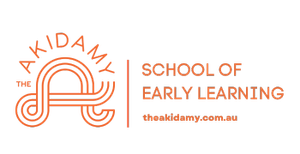
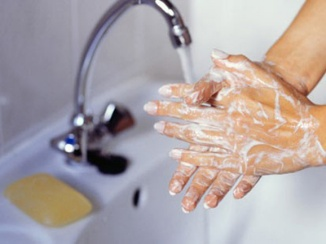 Use running water
Use running water